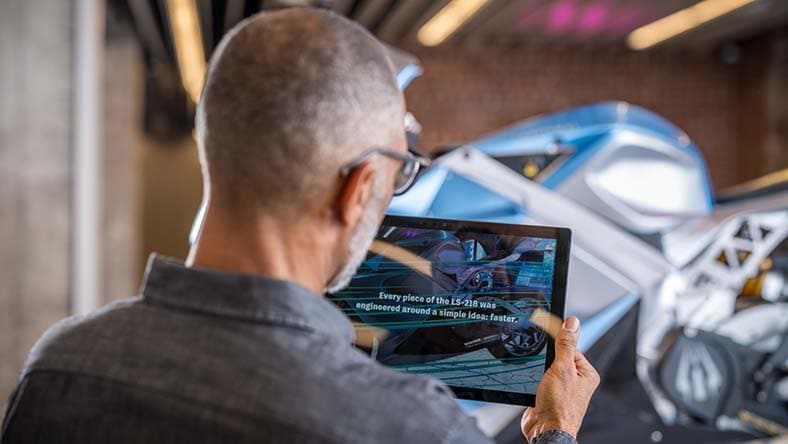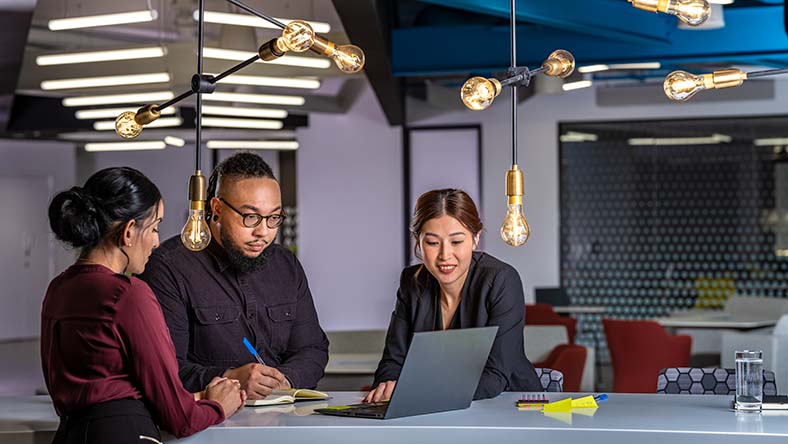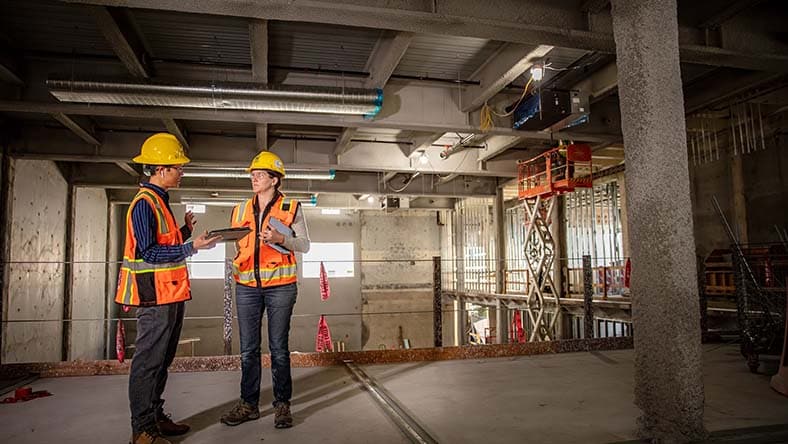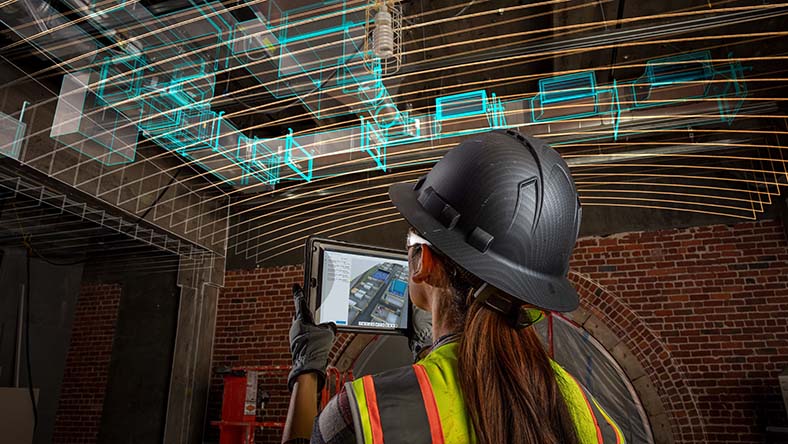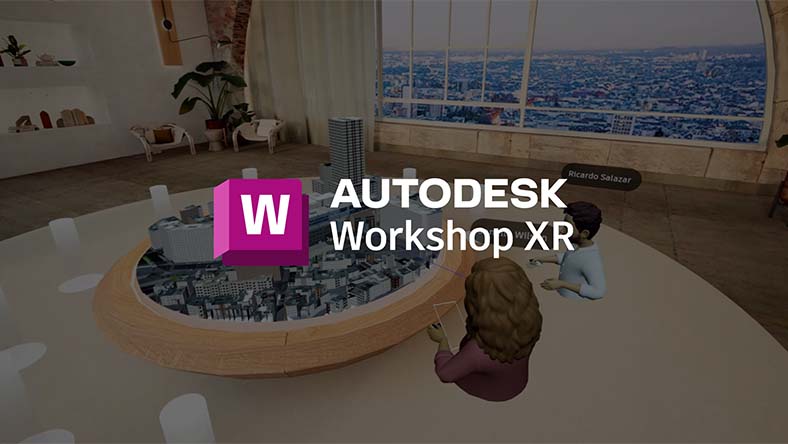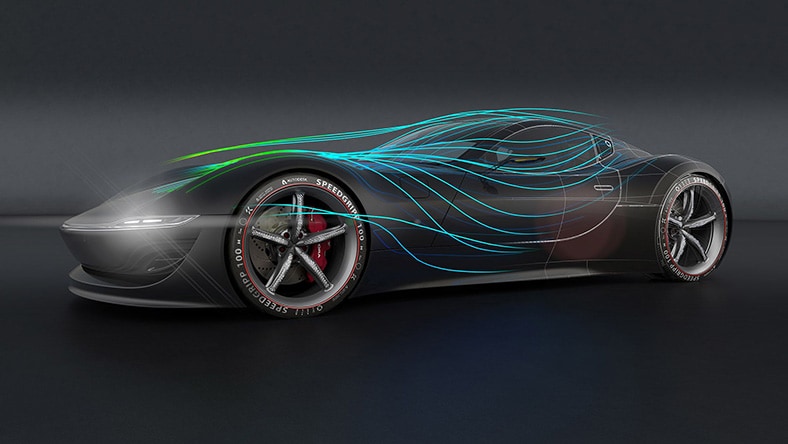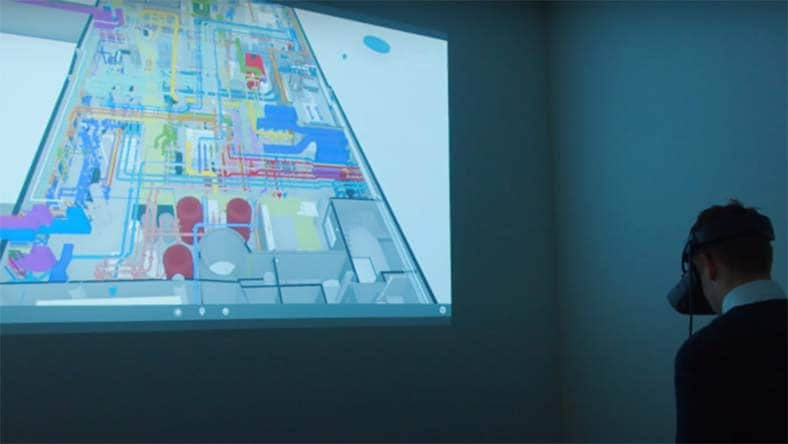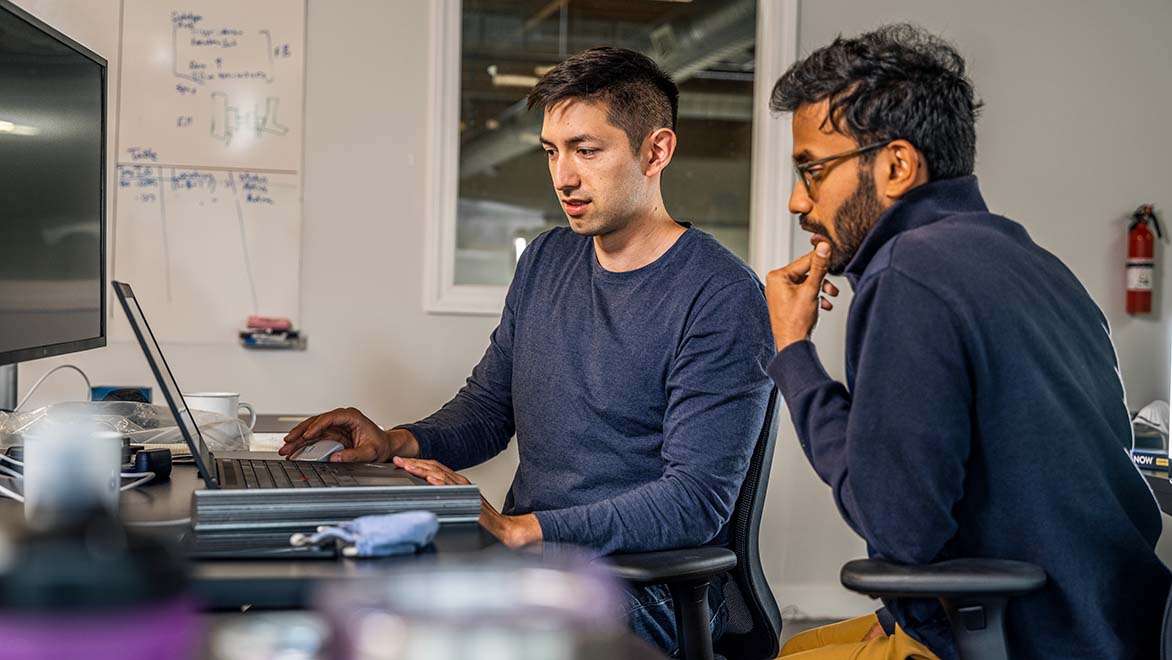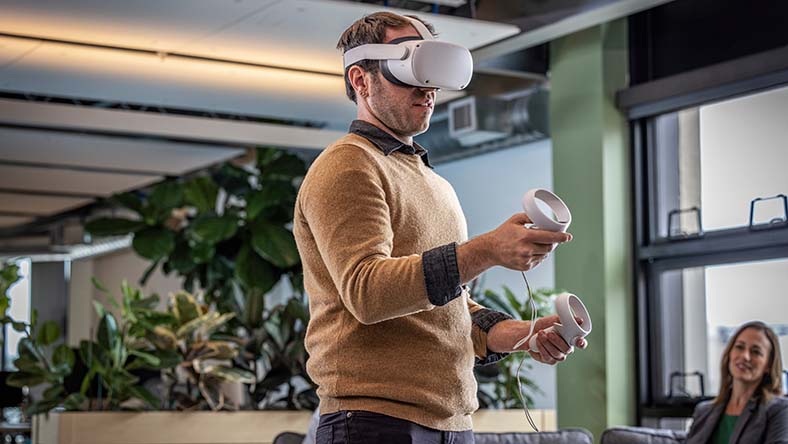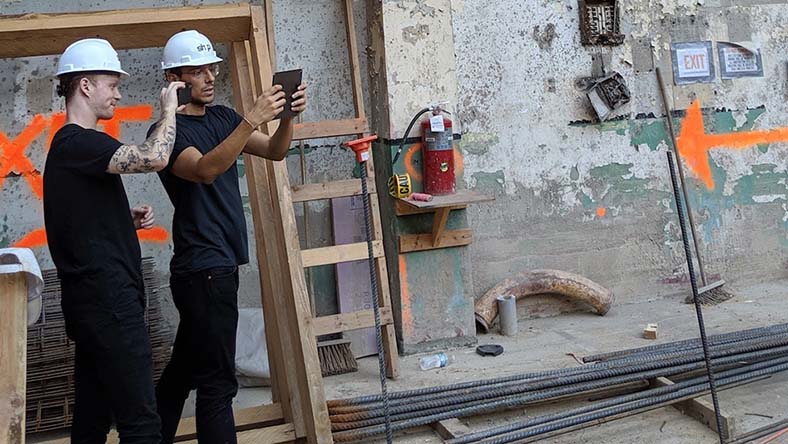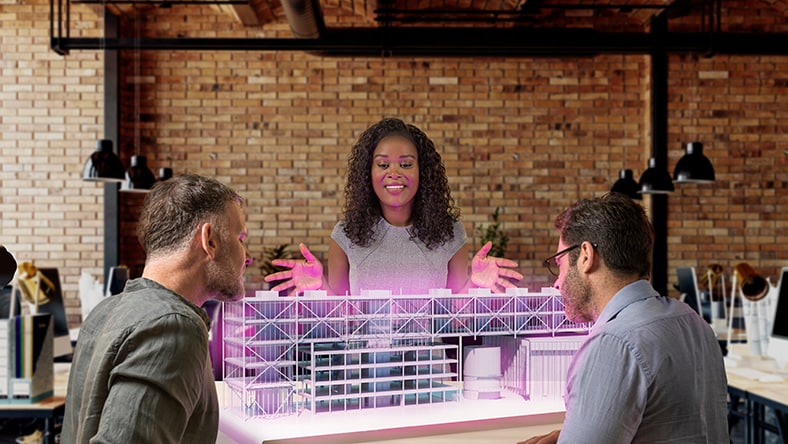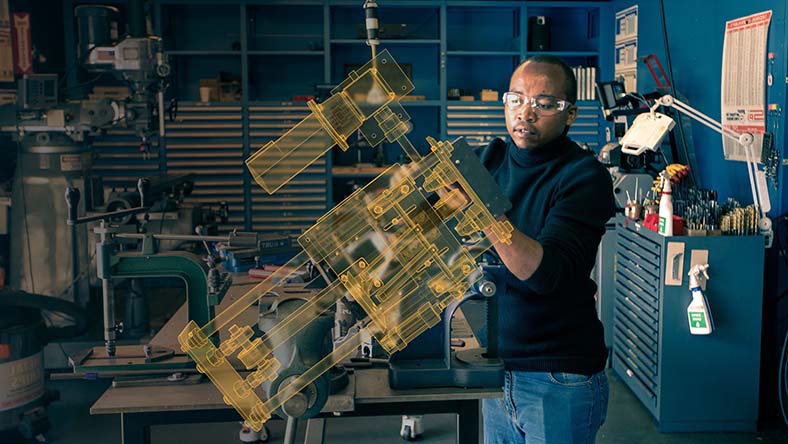& Construction

Integrated BIM tools, including Revit, AutoCAD, and Civil 3D
& Manufacturing

Professional CAD/CAM tools built on Inventor and AutoCAD
Today’s projects require broader teams and seamless collaboration in less time. At Autodesk, we believe that augmented reality (AR), virtual reality (VR), and mixed reality (MR) can play a key role in resolving these challenges. Immersive technologies can fundamentally change how people interact with their data and one another.
Visualize and interact with increasingly complex data. An immersive 3D experience offers accurate depth and spatial perception.
Extended reality connects teams within a virtual, interactive environment to generate creative and innovative solutions.
Use virtual collaboration to navigate complex data as a team. Gain deeper understanding and make faster, clearer decisions.
Build greener cities, design cleaner cars, and make the world more accessible with fewer resources and sustainable practices.
Visualize and interact with increasingly complex data. An immersive 3D experience offers accurate depth and spatial perception.
Boston FBX model courtesy of Geopipe
Learn how designers can create fluid 3D sketches in Create VR for Alias.
See how Kane uses Prospect by IrisVR to coordinate and visualize one of their most unique projects.
Image courtesy of Kane and IrisVR
Bring the benefits of extended reality to your business, teams, and workflows with Autodesk’s cloud-based platform, Forge. Build the applications you need and integrate our APIs with your existing software systems to get more from your data.
XR ACROSS INDUSTRIES
XR’s immersive technology is gaining widespread adoption across multiple sectors to improve efficiencies, collaboration, and innovation.
VR IN BUILDING DESIGN
XR shifts cumbersome 3D modeling tools into lifelike, interactive experiences, enabling designers and stakeholders to make better decisions faster.
XR IN CLOUD ADOPTION
Digitization and cloud technologies enable large-scale remote work and generate creative ways of working through automation and innovative XR.
From initial conception through operations, extended reality offers significant productivity gains. Extended reality empowers AEC professionals by providing immersive and collaborative access to any project data.
Extended reality elevates collaboration, understanding, and experience when design and engineering converge. From concept through production, we’re providing new ways to engage and improve designs.
Audiences and content creators alike can unlock new levels of storytelling through extended reality. Artists can break free from traditional screen-focused content with true immersion and interactivity.
Extended reality (XR) is the umbrella term for a spectrum of immersive and interactive technologies. It includes augmented reality (AR), virtual reality (VR), and mixed reality (MR). You can access extended reality experiences with an array of devices: mobile devices, VR headsets, and other technologies.
Virtual reality (VR) allows you to immerse yourself in a digital world to experience the true depth and visual richness of the digital object. In the real world, you must imagine yourself working with an object. But in the digital world, you are in the world of the object.
Augmented Reality (AR) allows you to bring virtual objects to the real world, in an interactive and spatially consistent way with real objects. Unlike Virtual Reality where you enter the world of the object, Augmented Reality brings the object to you, in your world.
Mixed Reality (MR) is the continuum between the Virtual and the Physical worlds where XR experiences exist. Towards the virtual end we find VR experiences, and towards the physical end we find AR experiences. Adding real-world elements, like pass-through video, to a VR experience will push that experience towards the physical side of the continuum. Conversely, adding virtual elements that replace or occlude the real-world in an AR experience will push that experience towards the virtual side of the continuum. Because of this, some AR or VR experiences are generically referred to as MR (if you are curious to find out more about the definition of XR, check out Paul Milgram and Fumio Kishino’s 1994 paper “A Taxonomy of Mixed Reality Visual Displays”).
Professionals in every field are working on more complex projects with larger teams and shorter deadlines. Distributed teams are making the best design decisions possible, before anything is built. Extended reality creates opportunities for faster, more informed decision making, and the chance to realize an accessible and sustainable future.
Extended reality is used across industries to:

